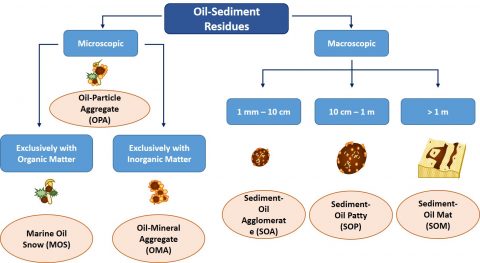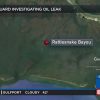 What happens when crude oil leaks or spills into the ocean?
What happens when crude oil leaks or spills into the ocean?
When oil is released into a marine environment it is subjected to multiple weathering processes including evaporation, dissolution, photo-oxidation and biodegradation. These processes work at various rates to degrade different chemical compounds in the oil. Crude oil is composed of light (low molecular weight) and heavy (high molecular weight) petroleum compounds, with light compounds being affected more rapidly by natural weathering processes.
Portions of the spilled oil that are resistant to weathering will persist in the environment for extended periods of time, especially when they become trapped close to the shoreline. Even when spills occur out in the open ocean, currents will often push the residual oil towards the shoreline, where it will present a hazard to humans and various coastal species. Oil that affects nearshore environments often interacts with suspended sediments in order to form various types of oil-sediment residues.
What are the different types of oil-sediment residues and how are they formed?
Oil that is not removed by ocean-scale natural weathering processes can form various types of residues including floating oil slicks (containing fresh or partially weathered oil), brownish emulsified mousse (containing partially or highly weathered oil), and rubbery tar balls (containing highly weathered oil). When floating oil approaches the shoreline in the form of either a slick or emulsified mousse, it may interact with sand or other sediments to form different sizes of macroscopic agglomerates or microscopic aggregates.

Macroscopic sediment-oil agglomerates (SOAs) are typically on the scale of several centimeters, and are typically formed with highly weathered mousse interacting with coarse or fine sediment. Microscopic oil-particle aggregates (OPAs) are typically under one millimeter in size, and are more likely to be formed when relatively fresh oil interacts with fine sediment. Sediment-oil mats (SOMs), which may reach up to several meters in length, can also be formed from the interaction of weathered mousse and sand and other types of sediments.
The full article can be read at source: Eos






